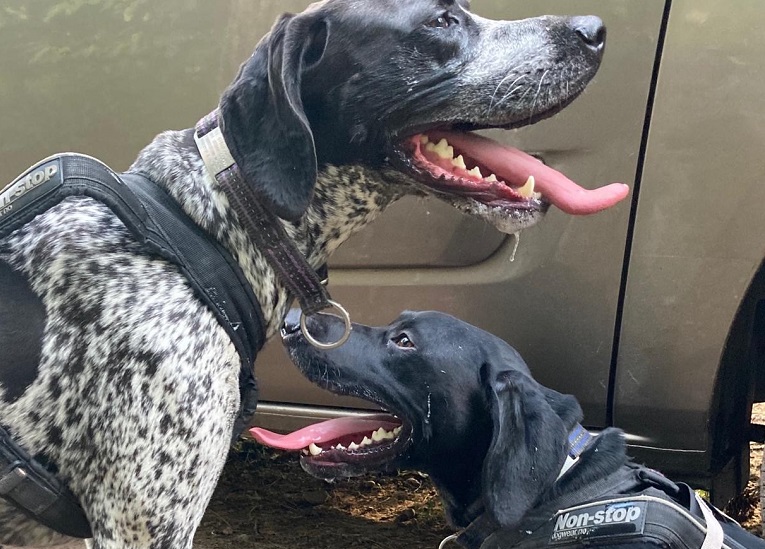Brucella canis: what vets need to know
14 Feb 2024
26 Aug 2020 | Emily Hall
Heat-related illness - more commonly known as 'heat stroke' - is a potentially fatal disorder that can affect both man and animals. Understanding why it happens, and which dogs are most at risk, could help to prevent this deadly disorder. Emily Hall, Anne Carter, and Dan O'Neill explain what to look out for and how to keep your dog safe.

As climate change pushes summer temperatures ever higher, you may experience becoming overheated and therefore feeling irritable, uncomfortable or even unwell in the heat. But at least you have some personal control over your exposure to overheating; dogs however may not. We need to consider the impact rising temperatures could have on our dogs.
Heat-related illness occurs when our bodies can no longer keep us cool enough. At the mild end of the heat-related illness spectrum (heat stress), you or your dog may feel tired, restless, struggle to sleep, lose your appetite, and either constantly sweat (you) or pant (your dog) to try to lower body temperature. At the more serious end of the spectrum (heat stroke), you or your dog could lose consciousness, start fitting, pass bloody diarrhoea or vomit, bleed under the skin and eventually experience internal organ failure. In the UK, 1 in 7 dogs affected by heat-related illness died from the condition.
Overheating can happen when the environmental temperature rises (for example, on a very hot day or being left in a hot car), or when the body generates excessive heat through exercising – either exercising heavily or exercising in a hot environment. The latest evidence shows that in the UK, most dogs that experience heat-related illness, do so after exercising, typically walking or playing in hot weather. And this can happen all year round, resulting in fatal heat illness even in winter. Just like people, when the temperatures start to climb, some dogs will overheat simply sitting somewhere hot. This could be sitting in the garden, spending the day at the beach or even being trapped in a hot house.
Dogs also die in hot cars. Sadly, despite years of campaigning, some people still take a gamble and leave their dog in the car, hoping it will be ok. Between April and September leaving your dog in the car is particularly dangerous, but dogs have died in hot cars as early as March, so never assume it’s safe to leave your dog in a vehicle.
New evidence in the UK shows that the following factors greatly increase your dog’s risk of heat related illness:
• elderly
• having underlying heart or breathing problems
• overweight or obese
• flat-faced (brachycephalic)
• a large or giant breed
• dehydrated or unwell
• the following breeds, for example Bulldog, French Bulldog, Chow Chow, Dogue de Bordeaux, Greyhound, Cavalier King Charles Spaniel, Pug, Golden Retriever or Springer Spaniel
Exertional heat-related illness is particularly a problem for younger dogs, active dogs (including Labrador Retrievers, Border Collies, Boxers and Staffordshire Bull Terriers), and particularly male dogs.
Conversely, environmental heat illness is a greater risk for older dogs and flat-faced dogs.
Any dog is at risk when left in a hot car, but flat-faced dogs will develop heat-related illness faster due to their limited capacity to cool through panting.
Dogs that are overheating often show the following signs:
• excessive panting, even at rest, along with bright red or blue gums
• collapsing, or being unsteady when walking
• passing diarrhoea or vomiting that may contain blood
• not responding normally or even losing consciousness
• fitting (seizuring)
• unexplained bruises that appear on the gums or under the skin
If your dog develops any of these signs in the heat or during exercise, you should immediately get them out of the sun, stop exercising them, cool them with water and phone your vet practice for advice. Early cooling and rapid veterinary care result in improved survival. If your dog is flat-faced or has lost consciousness, avoid drowning by keeping their head out of the water and avoid spraying water near their head.
Prevention is the best way to protect your dog from heat-related illness. The core message that every owner needs to remember is that ‘Dogs die in hot cars and on hot walks’. Avoid exercising your dog in hot weather or during the hot times of the day. This applies even in relatively warm weather during spring and early summer when your dog may not be acclimatised to the heat. Never leave a dog in a stationary car, or a car that could end up in the sun. Take care travelling with your dog in hot weather; if you are going on a long journey, ensure you can keep dogs cool and check on them regularly. Pay special attention to prevention if you have chosen to own a flat-faced dog or one of the other breeds shown to be at increased risk. And be extra vigilant if your dog is elderly or has some health issues that affect their breathing or hearts.
For more information on recognising and treating heat stroke in dogs take a look at this resource.
Read about the latest research on heat stroke in dogs.
Get tailored news in your inbox and online, plus access to our journals, resources and support services, join the BVA.
Join Us Today